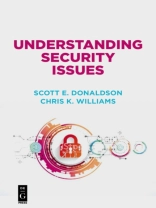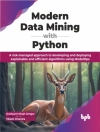With the threats that affect every computer, phone or other device connected to the internet, security has become a responsibility not just for law enforcement authorities or business leaders, but for every individual. Your family, information, property, and business must be protected from cybercriminals in the office, at home, on travel, and in the cloud. Understanding Security Issues provides a solid understanding of the threats, and focuses on useful tips and practices for protecting yourself, all the time, everywhere and anywhere you go.
This book discusses security awareness issues and how you can take steps to reduce the risk of becoming a victim:
- The threats that face every individual and business, all the time.
- Specific indicators of threats so that you understand when you might be attacked and what to do if they occur.
- The security mindset and good security practices.
- Assets that need to be protected at work and at home.
- Protecting yourself and your business at work.
- Protecting yourself and your family at home.
- Protecting yourself and your assets on travel.
Mục lục
FOREWORD – 1 page
ABOUT THE AUTHORS – 1 page
ACKNOWLEDGMENTS – 1 page
INTRODUCTION – 2 pages
- What is this book about?
- Who should read this book?
- Why did the authors write this book?
- Organization of the book
CHAPTERS
- Chapter 1—Security Awareness (~15 pages)
This chapter presents why security awareness is essential for everyone. This chapter presents some fundamental concepts and terms used throughout the book.
- Chapter 2—Security Process (~15 pages)
This chapter presents the security mind set of identifying assets, threats to those assets, asset vulnerabilities, protections, and risks resulting from protections.
- Chapter 3—Security in Your Life (~15 pages)
This chapter presents how you apply the security process to common life scenarios , at work, while traveling, and at home.
- Chapter 4—Security Scenarios (~40 pages)
This chapter presents how the Chapter 2 security process is applied to each scenario. Each scenario will walk through a number of common assets, and apply the security process to identify protections that should be applied.
- Chapter 5—Looking to the Future (~15 pages)
This chapter presents some of the evolving security threats, trends, and how you can continue to be security aware.
APPENDIX – Thinking Like a Security Officer (~15 pages)
This appendix presents how security people think about common protections in our work, and as a consequence, home life (e.g., locks, gates, passwords, and firewalls) and how they have to balance tradeoffs between protection and usability.
GLOSSARY – 3 pages
BIBLIOGRAPHY – 3 pages
INDEX – 4 pages
Giới thiệu về tác giả
Scott E. Donaldson, Johns Hopkins University, USA;
Chris K. Williams, Leidos, USA;
Stanley Siegel, Johns Hopkins University, USA












